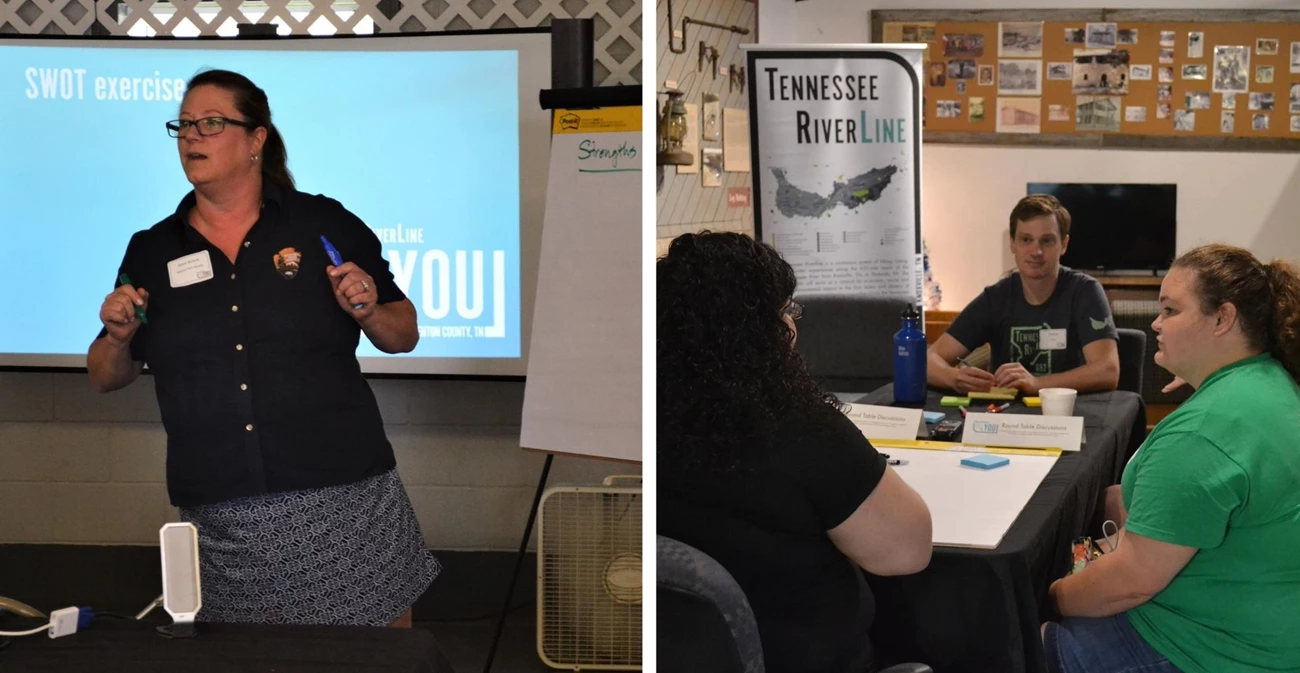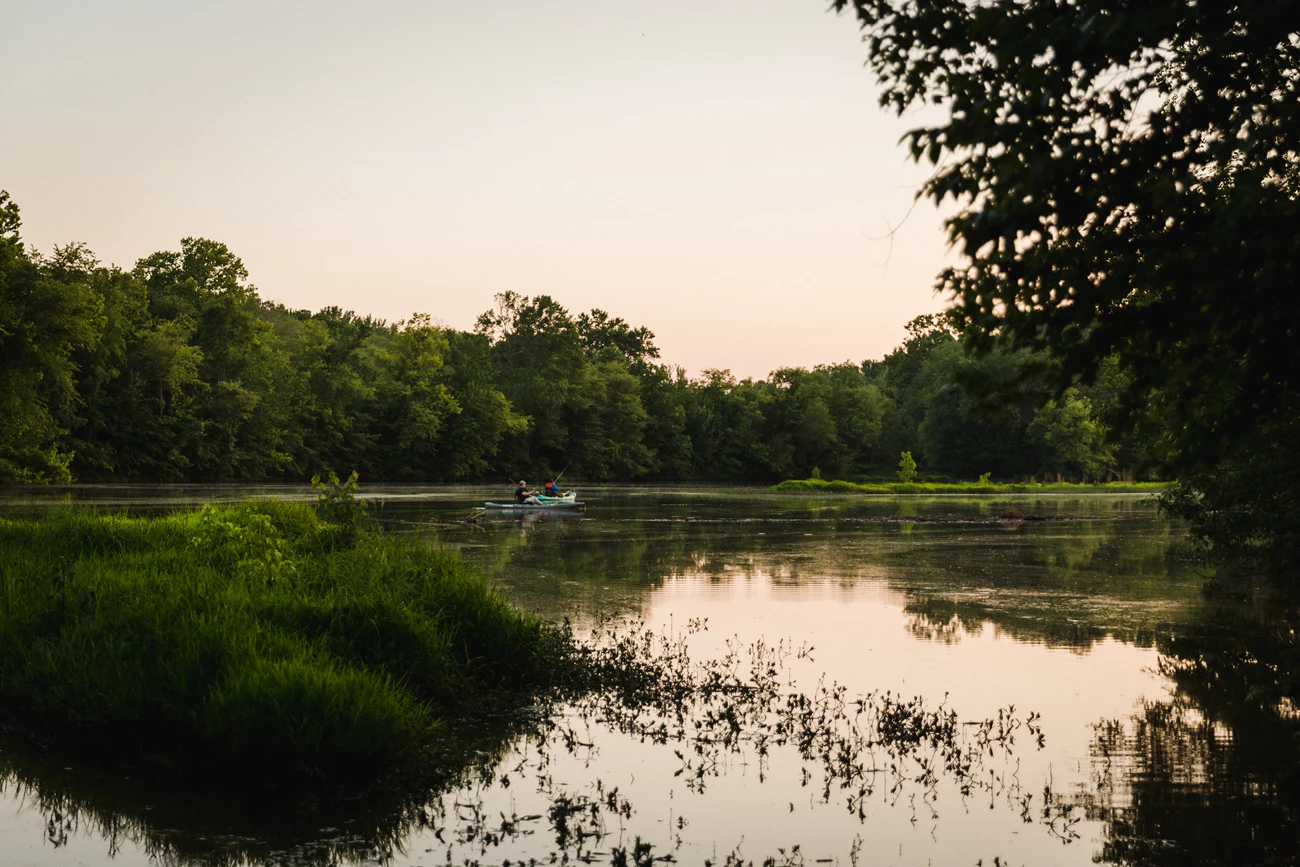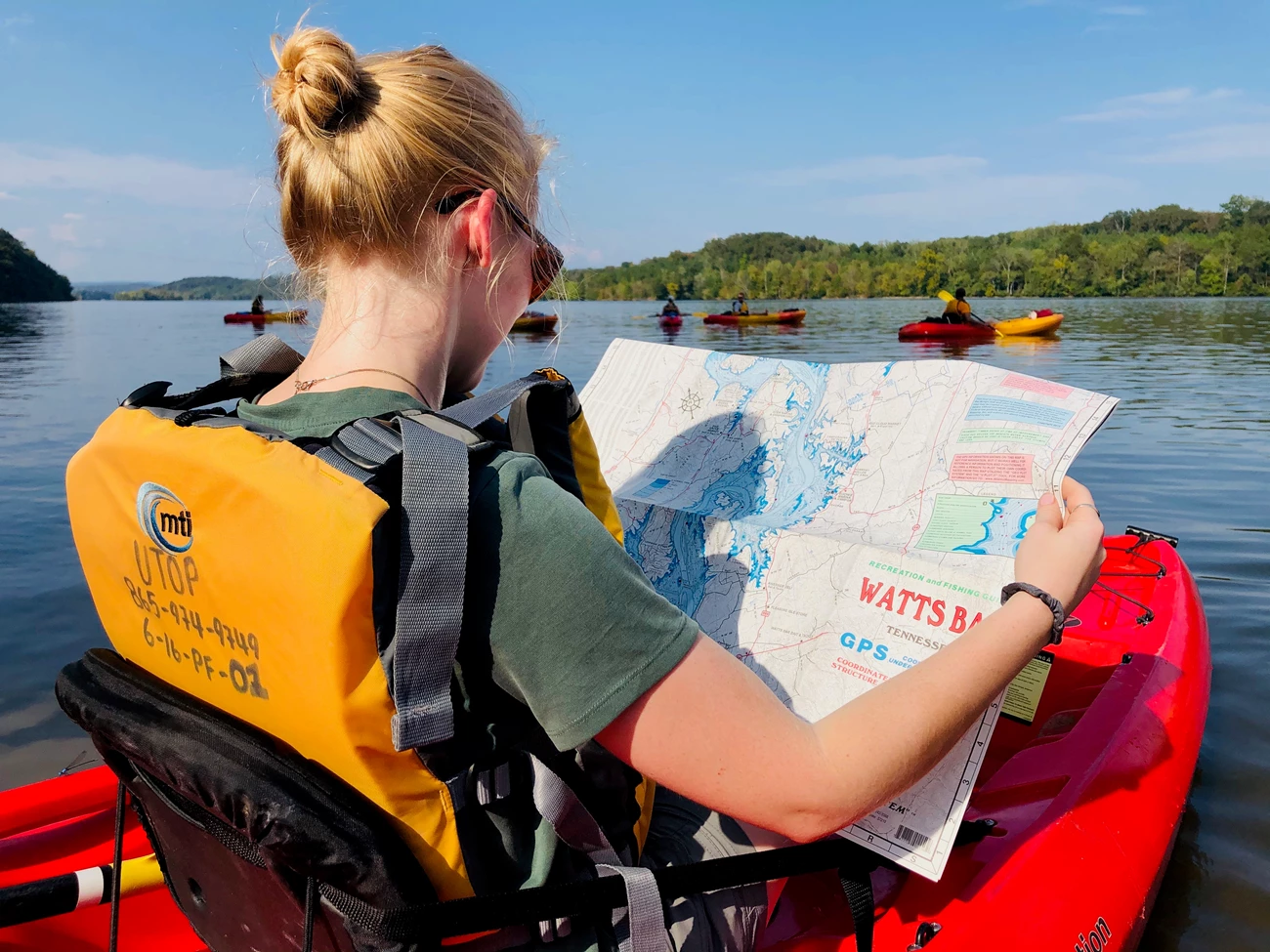Last updated: March 2, 2022
Article
The Tennessee RiverLine: A 652-Mile Regional Trail System Connecting Communities to the River

By Erica B. Ramirez
The Tennessee RiverLine, America's next great regional trail system, is becoming a reality. With a vision to connect communities along 652-miles of the Tennessee River through water and land trails, the project aims to not only create access points for communities to recreate on the river, but also to connect communities to the watershed and each other.
The project originated from students at the University of Tennessee in 2016 when Brad Collett, an associate professor at the College of Architecture and Design, offered a studio course that explored local landscapes, water resource stewardship, and how these resources affect communities.
As part of the course, students surveyed the Tennessee River from Knoxville, Tennessee to Paducah, Kentucky and found that the majority of residents were disconnected from the river. In collaboration with community partners and the National Park Service, students began to develop ideas to reconnect communities to the waterway through a multimodal trail along the Tennessee River with kayaking, hiking, biking and camping opportunities.
The Tennessee RiverLine spans four states and nine major dams. With such scale, the lands that surround the river could potentially provide access to a 1.2 million-acre “river park.” Under Collet’s supervision as the project’s director, students, staff and faculty developed a framework for the project.
With help from the National Park Service – Rivers, Trails and Conservation Assistance program, the project secured support from county governments, city leaders and community members. Of the 17 communities that responded to a call for applications to be a part of the Tennessee RiverLine Pilot Community Program, five were selected.
National Park Service project specialist Alison Bullock and community planner Nathan Hilbert visited the pilot communities during a five-week river tour. Together, they planned and facilitated partnership meetings, leadership retreats and public workshops to gather community input and river recreation ideas

The Muscle Shoals National Heritage Area in northwest Alabama was selected to be a part of the pilot program.
“We’ve had a tradition of being part of a watershed region and I think in some ways we lost that,” said Dr. Carolyn Barske Crawford, Director of the Muscle Shoals National Heritage Area. “Now we’re able to come together up and down the river to recognize that we have this tremendous resource in our backyard. We can better utilize this resource to benefit the region as a whole.”
The scale of the Tennessee RiverLine made coordinating with communities of differing resources and capacities challenging, but it also created a sense of connection to the river and comradery for the project.
Tennessee RiverLine pilot communities, organizers and partners gathered for a symposium to discuss their challenges, such as gaining support from local governments or introducing new recreation opportunities to community members.
“We have to think beyond our 90-mile stretch of the river,” Dr. Crawford said. “It’s an opportunity to be part of a project that covers 652-miles.”
In response to the challenges posed, the National Park Service offered best practices for partnerships, water resource stewardship and more. Dr. Crawford believed that connecting with the pilot communities and partners helped build credibility for the project which was crucial for gaining trust from local governments and getting the “green light” for action on the Tennessee River.

Roane County, located in east Tennessee, was another community involved in the pilot program. Inspired by the Tennessee RiverLine project, the community is working to expand recreation opportunities on the river which residents typically used for fishing and boating. Mike Beard, the Director of Roane County Parks and Recreation Department, said he’d share a paddling boat or two.
“The boating community here are bass fishers. They’ve got a giant horse-powered motor on this postage stamp boat and they go springing up the water,” Beard said. “You miss a lot at 40 miles an hour, such as birds diving for their dinner.”
At such boating speeds it can be difficult to note the debris accumulating on the river, plastic waste as well as microplastics follow the stream of water and pile up at the mouth of creeks. For many in Roane County, information about water quality and safety can be hard to come by. As a natural resource with opportunities for recreation, community health and economic development, the Tennessee RiverLine initiative encourages residents to care for and connect with the river.
“We are benefitting from a great deal of education from Brad Collett of the University of Tennessee and Alison Bullock of the National Park Service. Together, their teams are not forcing anything but the best out of us. They’ve given us an opportunity to extract our thinking and document it,” Beard said. “It’s a chain. The water that is passing my house today will be passing Chattanooga 10 days from now. It’ll be going to Kentucky and Ohio in July. It all flows through.”
These thoughts reflect the level of interconnectedness that the Tennessee RiverLine regional trail system aims to reach – a meeting of minds with the communities along the river.
With more than 50 kayaks on the water, Roane County held a paddling event where well-seasoned paddlers interacted with those new to the river, showing them how they can experience the new recreational opportunity.
Through such events, the Tennessee RiverLine project has garnered excitement throughout river communities, giving folks new aspirations for a natural resource they can access and enjoy.
"Engaging the river communities has certainly been the key to the success of this project," Bullock said. "Communities large and small are hungry for ways to improve their health outcomes and to expand their economies through tourism. Providing connections to the river for outdoor recreation, improving waterfront design and helping these communities to work together is how this project has gained traction so quickly."

As the Pilot Community Program wrapped up earlier this year, Collett and the National Park Service began to transition the project into the next phase – implementation of the RiverTowns Program, an initiative to empower communities to become a part of the regional trail system. Collett and Lizzy Gardner, a community assistance fellow with the National Park Service, developed the program to ensure the sustainability of the Tennessee RiverLine.
The RiverTowns program consists of three stages. Stage one, “celebrate,” develops deeper leadership and galvanizes wider community awareness and action. Stage two, “connect,” builds infrastructure and creates access points and camp sites. Stage three, “catalyze,” encourages local leadership to connect people and businesses to the river as agents of economic development.
As the project shifts to the next phase, community members, local leaders and organizations, and stakeholders realize that the Tennessee RiverLine is not a destination, but a continuous water trail journey. A vision for North America’s next great regional trail system, it celebrates the beauty of the Tennessee River, connects communities to the waterway and each other, and catalyzes health and economic opportunities for all.
Learn more about the vision for the Tennessee RiverLine.
